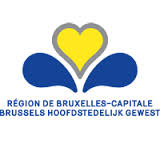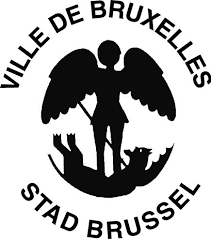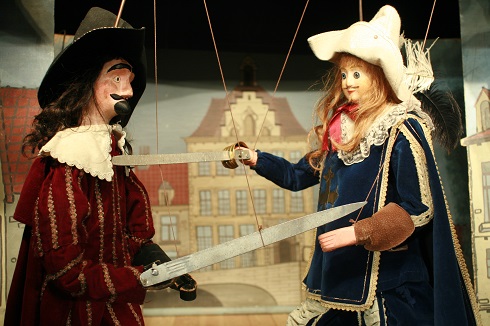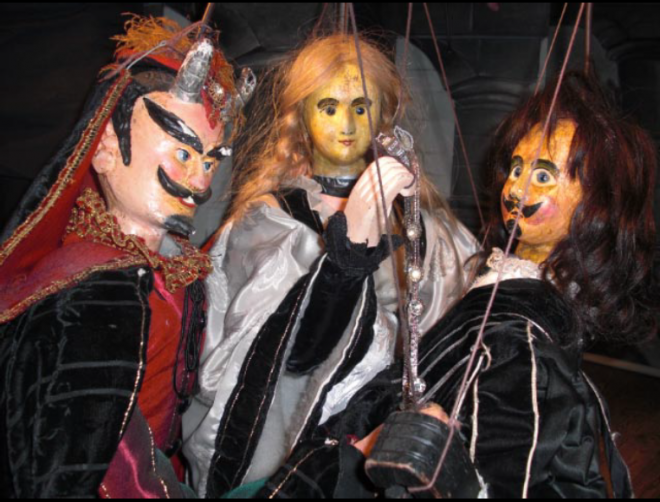History of Toone's Royal Theatre
The Théâtre Royal de Toone is the only traditional puppet theater in Brussels still in operation.
It was around 1830 that Antoine Genty, known as “Toone”, opened his “poechenellekelder”.
Far from confining himself to the past, José Géal – Toone VII opened the Royal Theater of Toone to Europe by adapting his shows in English… but also in Spanish, Italian and German.
This open-mindedness has projected the Toone Theater onto the European…and world stage.
The Théâtre Royal de Toone in Brussels: an original and authentic theater, steeped in Brussels history and culture!
Ideally located next to the Grand-Place, one can discover the roots of Brussels in a venerable house dating from 1696.
It is one of the places dearest to the hearts of the people of Brussels: the Théâtre Royal de Toone.
A puppet theater for adults, unique in Europe, in a typical attic with its benches and cushions with multicolored festoons nailed into the raw wooden planks... There is also a doll-making workshop, a library and a museum of puppet, where the "retired from the stage", Toone heroes of the past and favorite characters of fellow puppeteers from all over the world hang.
The Toone Theater Royal has continued the centuries-old tradition of popular puppet theater since 1830. A Toone puppeteer is inducted by the preceding Toone. He runs the theater and the puppet museum in Impasse Sainte-Pétronille. A well-hidden Brussels treasure.
Nicolas Géal – Toone (short for Antoine), the eighth of the name, lends his voice to all the puppets and creates new shows, notably by adapting famous pieces from the classic theater repertoire.
Puppets have their origins in an order from Philip II of Spain, son of Charles V, who, hated by the population, closed theaters to prevent them from becoming gathering places which would have accentuated hostility from his view. The people of Brussels would then have replaced the actors with “poechenelles” (polichinelles) in clandestine theaters.
At the beginning of the 19th century, Brussels puppet theaters were one of the most successful forms of entertainment for adults from modest backgrounds. They are setting up in working-class neighborhoods. Puppet theater allows great freedom of tone. The very varied repertoire is borrowed from popular legends, stories of chivalry, operas or even religious or historical pieces, cut into serials and performed very freely.
It was a popular mode of education. Indeed, the illiterate people could not afford the opera or the big theaters. Puppet shows allowed people to keep up to date with cultural news.
Today, Toone VIII – Nicolas Géal, surrounded by his 6 puppeteers, plays a vast repertoire, ranging from opera (“Faust”, “Carmen”…) to fantastic literature (“Dr Jeckyll and Mr Hyde”, “ Dracula "...)
Toone plays all the characters. That is to say, Toone does all the character voices and 6 puppeteers manipulate the puppets. You therefore need 7 people per show:
- Toone for vocals
- 6 puppeteers to operate the “poechenellen”
The puppeteers don't do the voices for practical reasons; they pass the puppets to each other, depending on the staging. A puppeteer therefore does not necessarily manipulate the same puppet throughout the show.
The program is based on the great theater classics such as “Cyrano de Bergerac” after Edmond Rostand, “The Three Musketeers” after Alexandre Dumas or even “Romeo and Juliet” after William Shakespeare and “Tijl Uilenspiegel” after Charles De Coster.
The pieces are, however, revisited and adapted...You will have no choice but to laugh while attending the show which is both funny, original and suitable for all audiences.
The Toone Theater is open all year round, except in January, the only month it is closed.
At least 4 public sessions per week, every Thursday, Friday and Saturday at 8:30 p.m. Saturdays, also at 4:00 p.m.
Some of our shows can be performed in a short version +/- 45 minutes or in a full version +/- 2 hours.
Currently, the permanent Toone Museum located on the first floor of the main building can be visited free of charge during performance hours. (In the near future, extension work at the Théâtre Royal de Toone will allow access to the museum outside show hours.)
The folkloric estaminet on the ground floor is open every day from 12:00 to 24:00, except Monday (closed day).
It is a 300-year-old tavern where, in an authentic atmosphere of Spanish pink bricks, blackened beams and flagged floors, you can enjoy a few beers, including the famous gueuze while tasting a slice of “Plattekeis” white cheese.
A proposal is underway to obtain UNESCO status as a masterpiece of the intangible cultural heritage of humanity for the Theater Royal in Toone, a status already enjoyed by some eminent fellow puppeteers in the popular tradition.
Historical and architectural interest of the surroundings and the neighbourhood
The Royal Theater of Toone is located at the end of the narrow impasse Schuddeveld (n°6) characterized by strut arches and twin arcades unique to Brussels. Preceded by a basket-handle passage, the building was the subject, in the 1970s, of an in-depth restoration by the architect J. Rombaux, who reused original elements of the frames as well as the anchors. which dated from the original construction in 1696.
The district, commonly called sacred islet since the 1960s, is located within the perimeter of the Grand Place and made up of very dense islets testifying to an urban organization from the Middle Ages.
The old buildings, for their part, belong to the so-called “reconstruction” period which followed the bombardment of the city in 1695.
The building which houses the theater and the impasse Schuddeveld have been classified as “together” since February 27, 1997.
The oldest Toone dates back from 1830. He was born in 1804 and was called Antoine Genty. He had an exceptionally long "reign" of forty-five years. Between 1830 and 1890 Toone, which is short for "Antoine" in the Brussels dialect, played "Ourson et Valentin", "Vivier et Malgase", "Les Quatre Fils Aymon" and a number of religious plays. He was seen in the area of the Rue des Sabots (presently Rue de Wynants), Rue du Miroir, Rue des Vers (Rue Pieremans), Rue Christine and the Impasse des Liserons, before ending his days in a home.
Toone II (1848-1895), also known as Jan van de Marmit because his theatre was called "In de Marmit", was actually named François Taelemans. He played from 1865 until he died. He lived in the same building as Toone the Elder, who became his son’s godfather. He too never left the quarter of the Marolles. And he was the one who is going to be called Toone II in the genealogy that was established by the "Les Amis de la Marionnette" (the friends of the puppet) in 1931.
Georges Hembauf (1866-1898), Toone III, was trained by François Taelemans. His nickname was "Toone de Locrel" as he had established his puppet cellar in the Impasse de Locrel that borders on the Rue de la Rasière. In the newspaper "La Réforme", he declares in 1897 that his theatre was the only one of the about fifteen theatres in the Brussels region that did not loose its public and saw its reputation increase. He employed ten workers and a chief scene-shifter, and a collection of four hundred puppets. His repertoire encompassed no less than 1000 pieces, under which "La Belle Gabrielle", "La Guerre de Charlemagne", (the war of Charlemagne) "Le Bossu" (the hunchback), "Hamlet" and "La Bataille de Waterloo" (the battle of Waterloo).
The history of the Toones gets complicated as there was another legitimate pretender to the title of Toone III : Jan Schoonenburg (1852-1926), hatter by trade. Because his hat covered his abundant hair, he was called "Jan de Crol" (Curly John). According to Louis Quiévreux, a journalist, he was undoubtedly a great artist. When he played "Les Trois Mousquetaires" (The Three Musketeers), "Vingt Ans Après" or "Le Vicomte de Bragelonne", he performed them for two months, and every night one would notice the same regular visitors sitting on the benches. But the competition between the dance-halls and the cabarets became increasingly tough, and Toone de Crol ended up losing his public. One evening in 1926 he was found hung among his puppets.
Jean-Baptiste Hembauf (1884-1966) the son of Toone de Locrel, directed his theatre as Toone IV for thirty years. For the first time, the name Toone was passed on from father to son. Since his father had sold all his puppets, he started working together with a puppet manufacturer, Antoine Taelemans, the son of Toone II. It was Toone IV who created the play "Le Mystère de la Passion de Notre Seigneur Jésus-Christ" on the 30th of March 1934, a puppet play which had been written down by Michel de Ghelderode according to oral tradition. He also warmly approved the choice of Jef Bourgeois, a painter from the Marolles, as the guardian of the puppet play, and invested José Géal with the sword of the puppet Charlemagne before he crowned him Toone VII.
Daniel Vanlandewijck (1888-1938) came into office as Toone V in a cellar of the Impasse Sainte-Thérèse. Everything went well until the day when the Commission for Hygiene of the City of Brussels decided to close the hall for reasons of insalubrity. In a fit of depression, Toone V sold all his puppets. However, a small group called "Les Amis de la Marionnette" (the friends of the puppet) was willing to save this essential element of the Brussels folklore. Its members were, amongst others, Adolphe Max, Burgomaster of Brussels, Marcel Wolfers, a sculptor-jeweler (who had bought the collection of puppets that was in danger of being dispersed and offered it to the new theatre) and Jef Bourgeois, who became the first curator of the theatre. The new hall in Rue Christine was inaugurated in the presence of Adolphe Max on the 31st of March 1931.
Because this hall was too small, the theatre of Toone V soon moved to the Impasse de Varsovie, where the first "pornographic" performance took place. During this play, a stark naked Woltje has a lot of fun with a "toffe mokske" (nice girl) in his bed. The puritan part of the audience shouted "Curtain !", and urged by the right-minded press, the theatre had to close for several days. Daniel Vanlandewijck passed away in the Hospital Saint-Pierre in May 1938.
Pierre Welleman (1892-1974), also known as "Peïe Pââp" (Peter with the pipe), takes over in the Impasse de Varsovie as Toone VI. However, during a November night in 1944, the only V-bomb that fell on Brussels hit the ground only a few steps away from Toone’s cellar. Seventy-five puppets were destroyed in the disaster. Because the door of the cellar was smashed to bits and its roof collapsed, Pierre Welleman gathered the debris of his troupe, took it to the Rue Notre-Dame-de-Grâce, and stored the puppets in an old stable that had been transformed into a cart depot.
On the occasion of the creation of the "Farce de la Mort qui faillit trépasser" (farce of the death who almost passed away) by Toone VI, Michel de Ghelderode wrote an homage to all Toone’s : "Toone, Rex Marollorum". In October 1956, Toone VI was forced to move and he installed his small universe in café "Le Lievekenshoek" (lover’s corner) on the Place de la Chapelle. But television, second residences and caravans, football and the growth of the car park kept the public away from the "poechenellekelder" (puppet cellar). The death-blow came in March 1963, when Toone VI was expropriated once more. His old age and ill health prevented him from fighting back.
Once again, it was Jef Bourgeois, the curator of the museum, who saved the puppets by creating "Les Amis de Toone" (the friends of Toone). This group was temporally housed in the cellars of the Maison du Roi on the Grand Place. Jef Bourgeois, together with Jean-Baptiste Hembauf, insisted that José Géal, who had had a great success with his interpretation of "La Tentation de Saint-Antoine" (the temptation of Saint-Anthony) on his farewell party, assured the continuation of the Toone dynasty.
José Géal, a man of popular Brussels descent, had the advantage of being a professional puppet player . After having been an actor for the National Theatre of Belgium for two years, he created the "Theatre des Enfants" (children’s theatre) in 1954. It was the first professional puppet theatre for children. After the World Exposition of 1958, where he received a gold medal, he started to make programs for the Belgian Radio and Television. He is the father of "Plum-Plum" and "Bonhommet et Tilapin". In 1962, he was elected president of the Union Internationale de la Marionnette (International Union of the Marionette) during a meeting in Warsaw.
José Géal was enthroned as Toone VII at the Place de Brouckère on the 10th of December 1963. With the support of Toone IV (Hembauf) and Toone VI, he gave the Toone Theatre the statutes of a non-profit association. He also managed to acquire a dilapidated 17th century house in the Ilot Sacré, in the middle of the Petite Rue des Bouchers. After a rough renovation, the Toone Theatre was inaugurated with "La Passion" by Michel de Ghelderode on the 1st of April 1966. It was not until 1979 that the final restoration of the theatre could be carried out.
On September 16, 2000, for the 40th anniversary of the Free Commune of Ilot Sacré, José Géal yields for the first time its place to his son Nicolas Géal who interprets all the voices of "Duvelor ou la Farce du Diable vieux" (Duvelor or the Joke of the old Devil) from Michel de Ghelderode. In front of a conquered room, the Burgomaster of Brussels, François-Xavier de Donnea, exclaims: "the taking over is ensured!".
Forty years day for day after the enthronement of his father by Jean-Baptiste Hembauf, on December 10, 2003, it is the turn of Nicolas Géal to be established in the Town hall under the name of Toone VIII, under the aegis of Freddy Thielemans, Burgomaster of the town of Brussels. At this occasion, Nicolas Géal interprets "Genevieve of Brabant", opera for puppets from Erik Satie, accompanied on the piano by the virtuoso Pierre-Alain Volondat, prize winner of the Queen Elizabeth International Contest in 1983.
Keeping tradition alive : We visit Brussels’ last-remaining puppet theatre for adults
Dec 22, 2015 | Richard Harris - The Bulletin
Brussels once boasted about 50 puppet theatres, catering for people who couldn’t afford the theatre or opera. Now there is only one left
The emotional heart of Brussels, the Royal Toone Theatre, is a puppet theatre for adults - the last living example of a unique cultural tradition that dates from the 16th century when Philip II of Spain, afraid of political unrest, closed all the theatres.
The puppet shows were a way around the ban. Toone, dating from approximately 1830, is named after the founding puppeteer Antoine Gentil. Each succeeding puppetmaster is named Toone, and twice the succession has passed from father to son.
Originally in the Marolles, since 1965 the Royal Toone Theatre is located near the Grand-Place in a building dating from 1695 complete with ancient café and garden. We spoke to puppetmaster Nicolas Géal AKA Toone VIII.
When was Toone founded ?
We don’t know for sure as the first one couldn’t read nor write, so the only stuff we have left is a licence, because he needed a licence to be able to perform. The first Toone started in the Marolles and it was meant for people who couldn’t read. Basically they would go to the theatre and understand what was going on. They could not afford to go to big theatres or the opera so they would go to small puppet theatres. There used to be 50 theatres like this one in the late 19th century and now this is the only one.
So they took operas and classical stories, added some Brussels humour and performed them with puppets ?
Yes but each story was performed over two months like a soap opera. People had no TV so they could make it. That’s the reason why all those theatres disappeared in the 1960s, because of television.
You are Toone VIII and you succeeded your father Toone VII. Why Toone ?
Toone was the nickname of Antoine Gentil, the founder, but the Toone title isn’t always passed from father to son. You’ve got to be crazy enough to be willing to do it.
Originally this was only performed in Bruxellois or Brussels Vloms, but you now offer performances in English, German and Spanish ?
We have The Three Musketeers, Hamlet and Macbeth in English. I’m working now on Sherlock Holmes. But whatever the language, people know the story, so they can follow.
Tell us a bit about the puppets
When my father took it over in the 1960s he only had 100 puppets. The old Toone was very old and tired, so he just had 100 puppets and from then on my father had to redo everything - find a place to perform. He had to rewrite the shows so they could fit one night. That’s an amazing job.
We have some very old puppets dating from the 19th century. Unfortunately we don’t have a lot of those as people at the time had no reason to keep them. It wasn’t like a museum. Now we have about 1,400 puppets - they are typical Sicilian puppets that can be made to walk. They are quite heavy, about 8kg each. It’s probably Sicilian puppeteers who brought the tradition into Belgium after the middle ages. With scene changes we need about six puppets per show for each main character.
The puppets are hand-made ?
Yes. We have a carpenter for the hands and feet and then a lady for the costume, another lady does the hat. It’s a lot of work. If it was one person for the whole puppet it would probably take a week to do it.
What’s involved in being a puppeteer ? I understand there are about seven puppeteers per show, but that you do all the voices ?
Our puppets are not too complicated. There is basically just one string - it’s quite easy. You don’t need to be so qualified to move it. I guess it would take two months before you can walk the puppets. It’s the weight of the body on one leg and then the other. It’s like walking drunk. Because the puppets are so heavy each puppeteer doesn’t stay with each puppet for the whole show so it would be confusing to try to stay with a particular character’s voice so I do them all.
At the end of the performance you must be pretty exhausted ?
I think it must be like boxing ; I never did that but I think they probably feel like that at the end of the match. Cheers !







